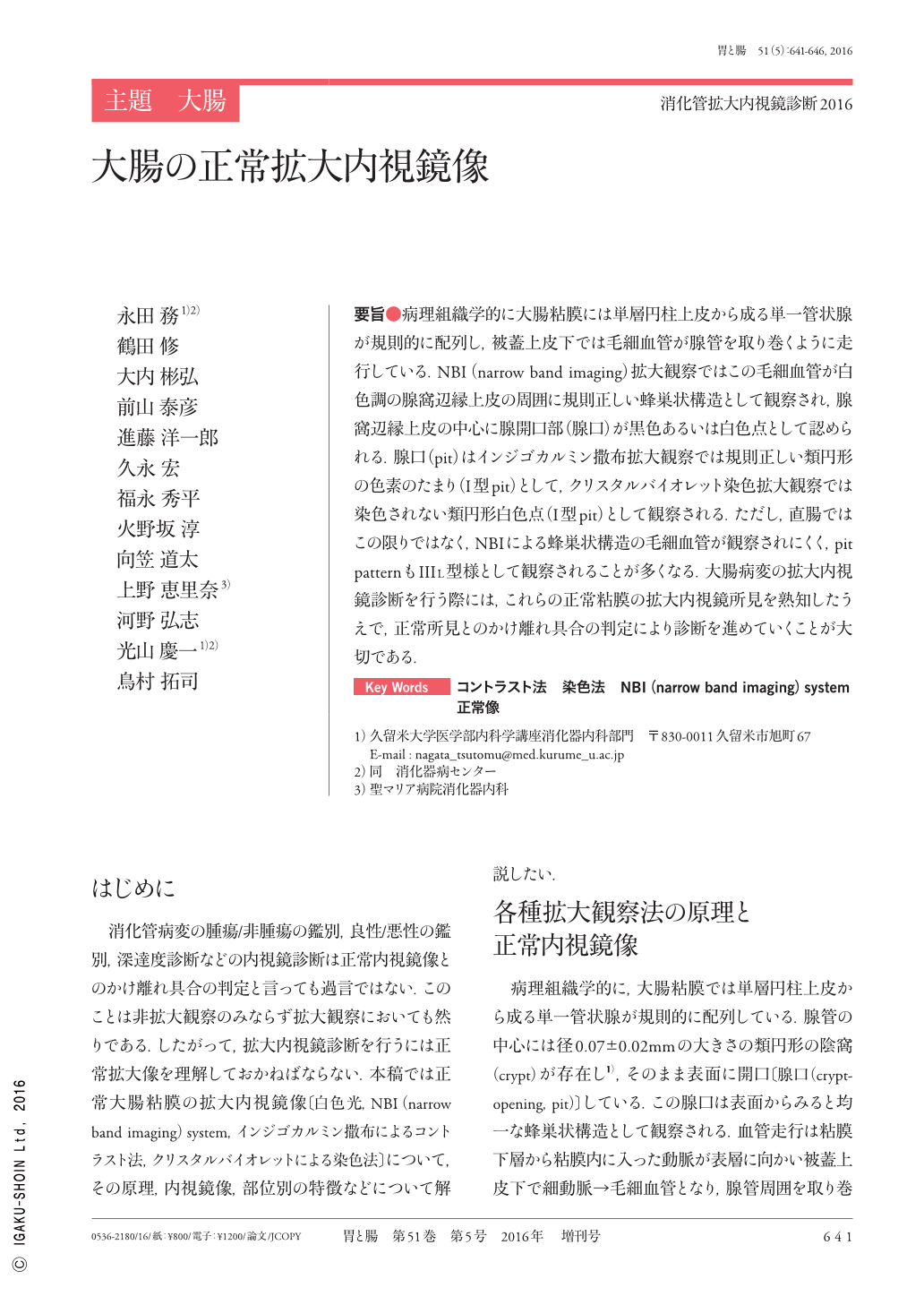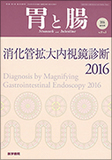Japanese
English
- 有料閲覧
- Abstract 文献概要
- 1ページ目 Look Inside
- 参考文献 Reference
- サイト内被引用 Cited by
要旨●病理組織学的に大腸粘膜には単層円柱上皮から成る単一管状腺が規則的に配列し,被蓋上皮下では毛細血管が腺管を取り巻くように走行している.NBI(narrow band imaging)拡大観察ではこの毛細血管が白色調の腺窩辺縁上皮の周囲に規則正しい蜂巣状構造として観察され,腺窩辺縁上皮の中心に腺開口部(腺口)が黒色あるいは白色点として認められる.腺口(pit)はインジゴカルミン撒布拡大観察では規則正しい類円形の色素のたまり(I型pit)として,クリスタルバイオレット染色拡大観察では染色されない類円形白色点(I型pit)として観察される.ただし,直腸ではこの限りではなく,NBIによる蜂巣状構造の毛細血管が観察されにくく,pit patternもIIIL型様として観察されることが多くなる.大腸病変の拡大内視鏡診断を行う際には,これらの正常粘膜の拡大内視鏡所見を熟知したうえで,正常所見とのかけ離れ具合の判定により診断を進めていくことが大切である.
Histologically, a single tubular gland comprising a single layer of columnar epithelium in the normal colorectal mucosa is regularly arranged, running as capillaries under tegmental epithelium surrounding the ducts. In magnifying endoscopy with NBI(narrow-band imaging), the capillaries are visualized as a regular honeycomb-like structure around white marginal crypt epithelium and the crypt opening is visualized as a black or white point in the center of marginal crypt epithelium. In magnifying endoscopy using indigo carmine dye spraying, the crypt opening(pit)is observed as a regular circular dye reservoir(type I pit), whereas using crystal violet staining, it is visualized as a roughly circular unstained white point(type I pit). These observations are not limited to the normal colorectal mucosa ; however, it is rare to observe regular honeycomb-like capillaries using NBI as the crypt opening is often observed as having a type IIIL-like pit pattern. When performing the magnifying endoscopic diagnosis of colorectal lesion, it is necessary to compare normal and abnormal endoscopic findings.

Copyright © 2016, Igaku-Shoin Ltd. All rights reserved.


